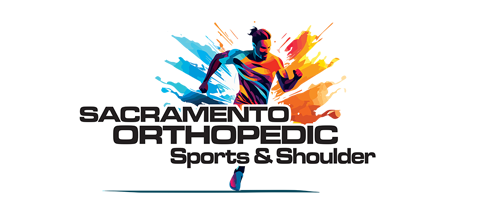PHASE I: Post-operative weeks 0-4
NWB for 6 wks, Brace locked in extension for ambulating and sleeping for minimum of 8 wks or until quad function returns. Focus on preventing posterior subluxation of tibia to prevent PCL reconstruction stretching.
Weeks 0-2 keep extended, no flexion – work on hip flex/ext/abduction/adduction, calf pumps, quadriceps isometrics, assisted leg lifts with knee immobilizer on.
Weeks 2-4 brace unlocked 0-60 deg for passive knee flexion and active knee extension to limit posterior tibial sag
Weeks 4-6 increase to 0-90 deg flexion
Weeks 6 and on: wbat and progressive knee flexion to obtain full flexion by 12 wks; avoid open chain exercises for 12 wks to avoid posterior tibial translation.
PHASE II: Post-operative weeks 4 to 12
Criteria for progression to Phase II:
- Good quadriceps control (good quad set, no lag with SLR).
- Approximately 60 degrees knee flexion.
- Full knee extension shoulder be maintained throughout.
- No signs of active inflammation.
- Goals:
Increase ROM (particularly flexion). - Normalize gait.
- Continue to improve quadriceps strength and hamstring flexibility.
Brace:
- 4-6 weeks: Brace unlocked for gait in controlled environment only (i.e. patient may walk with brace unlocked while attending PT or when at home).
- 6-8 weeks: Brace unlocked for all activities.
- 8 weeks: Brace discontinued, as allowed by surgeon.
- Note, if PCL or LCL repair, continue brace until cleared by surgeon.
- Weight-bearing status:
- 4-8 weeks: WBAT with crutches.
- 8 weeks: May discontinue crutches if patient demonstrates:
- No quadriceps lag with SLR.
- Full knee extension.
- Knee flexion 90-100 degrees.
- Normal gait pattern (May use 1 crutch/cane until gait normalized).
- If PLC or LCL repair, continue crutches for 12 weeks.
- Therapeutic Exercises:
- 4-8 weeks:
- Wall slides/mini-squats (0-45 degrees).
- Leg press (0-60 degrees).
- Standing 4-way hip exercise for flexion, extension, abduction, adduction (from neutral, knee fully extended).
- Ambulation in pool (work on restoration of normal heel-toe gait pattern in chest-deep water).
- 8-12 weeks:
- Stationary bike (foot placed forward on pedal without use of toe clips to minimize hamstring activity; seat set slightly higher than normal).
- Closed kinetic chain terminal knee extension using resisted band or weight machine. Note: important to place point of resistance to minimize tibial displacement.
- Stairmaster.
- Elliptical trainer.
- Balance and proprioception exercises.
- Seated calf raises.
- Leg press (0-90 degrees).
PHASE III: Post-operative months 3 to 9
Criteria for progression to Phase III:
- Full, pain-free ROM. (Note: it is not unusual for flexion to be lacking 10-15 degrees for up to 5 months post-op.)
- Normal gait.
- Good to normal quadriceps control.
- No patellofemoral complaints.
- Clearance by surgeon to begin more concentrated closed kinetic chain progression.
Goals:
- Restore any residual loss of motion that may prevent functional progression.
- Progress functionally and prevent patellofemoral irritation.
- Improve functional strength and proprioception using close kinetic chain exercises.
- Continue to maintain quadriceps strength and hamstring flexibility.
Therapeutic exercises:
- Continue closed kinetic chain exercise progression.
- Treadmill walking.
- Jogging in pool with wet vest or belt.
- Swimming (no breaststroke or “frog kick”).
PHASE IV: Post-operative Month 9 until return to full activity
Criteria for progression to Phase IV:
- Clearance by surgeon to resume full or modified/partial activity (i.e. return to work, recreational, or athletic activity).
- No significant patellofemoral or soft tissue irritation.
- Presence of necessary joint ROM, muscle strength and endurance, and proprioception to safely return to athletic participation.
- Full, painfree ROM.
- Satisfactory clinical examination.
- Quadriceps strength 85% of uninvolved leg.
- Functional testing 85% of uninvolved leg.
- No change in laxity testing.
Goals:
- Safe and gradual return to work or athletic participation.
- This may involve sport-specific training, work hardening, or job restructuring as needed.
- Patient demonstrates a clear understanding of their possible limitations.
- Maintenance of strength, endurance, and function.
- Therapeutic exercises:
- Continue closed kinetic chain exercise progression.
- Cross-country ski machine.
- Sport-specific functional progression, which may include but is not limited to:
- Slide board.
- Jog/Run progression.
- Figure 8, carioca, backward running, cutting.
- Jumping (plyometrics).
Work hardening program as indicated by physical therapist and/or surgeon recommendation. Patient will need a referral from surgeon to begin work hardening.
